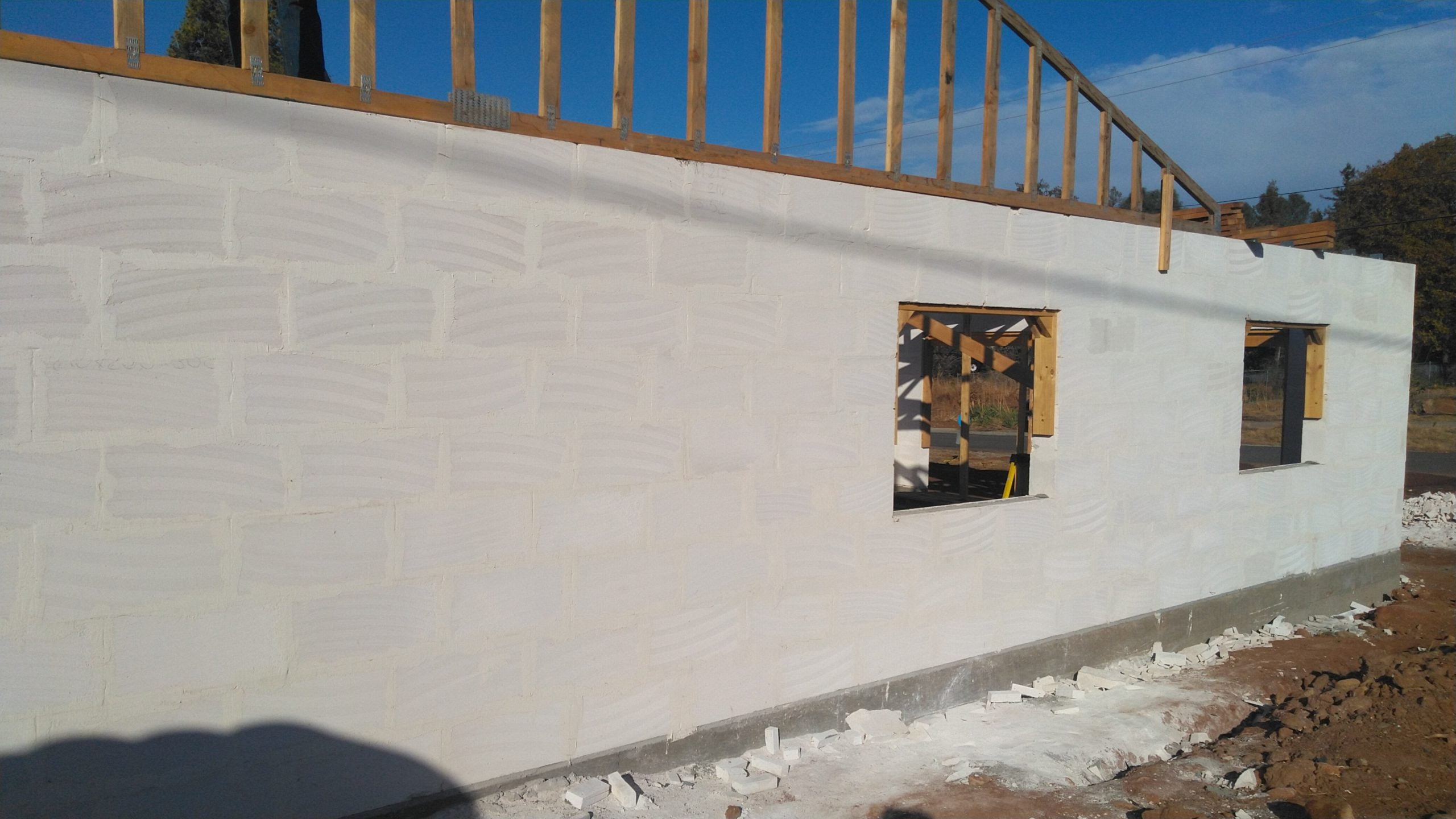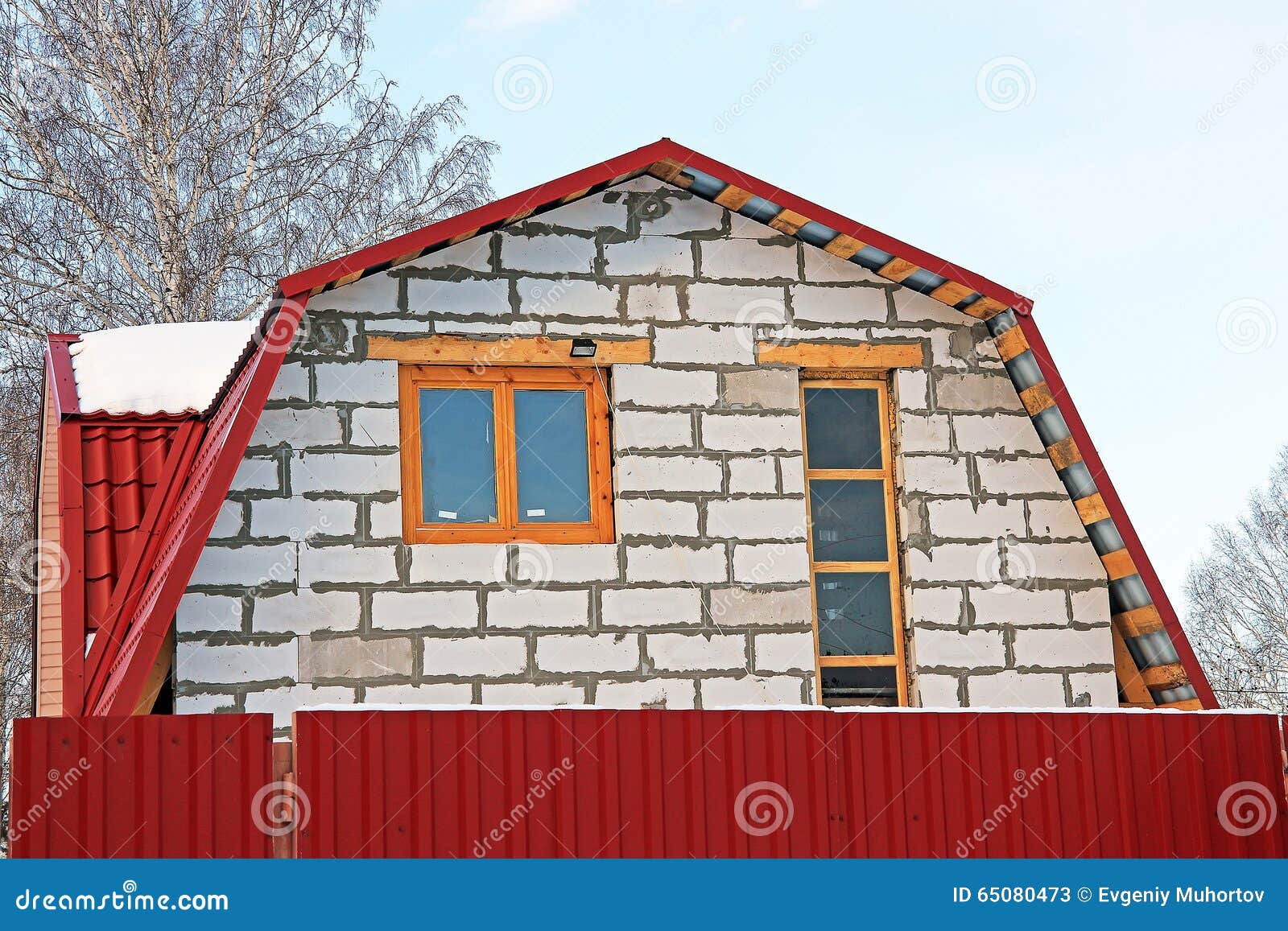
Autoclaved Aerated Concrete House Workplace Stock Image Image of form, framing 53257655
Advantages A Green Future At this time of Climate Change, the most appropriate, environmentally friendly, home building product for the Canadian market, is the European developed, 100 year old and most widely used "Autoclaved Aerated Concrete" (AAC) technology.

Pin on Autoclaved Aerated Concrete
Less time required than laying bricks or blocks. Less weight less steel required. Low density, low thermal conductivity. Aerated concrete blocks have the density between 400 and 800 kg per cu.m and the thermal conductivity coefficient ranging between 0.1 and 0.21 W/ (m*оС), that is why they are light and warm.

a black and white photo of a snow covered hill with a window in the middle
Autoclaved aerated concrete combines insulation and structural capability in one material for walls, floors, and roofs. Its light weight/cellular properties make it easy to cut, shave, and shape, accept nails and screws readily, and allow it to be routed to create chases for electrical conduits and smaller-diameter plumbing runs.

Global Innovative Building Systems » Autoclaved Aerated Concrete (AAC Building Blocks)
AAC concrete can be utilized on roof panels, walls, floor, lintels, and blocks but take note below: · Panels are usually available in a standard thickness between 8-12 inches in width. For the lengths, it can be 20 ft. · Blocks come in different sizes: 24, 32 or 48 inches. For standard thicknesses, 4-16 inches, and the height should be 8 inches.

New House Building from Autoclaved Aerated Concrete Blocks. Stock Photo Image of renovation
Autoclaved Aerated Concrete (AAC) is a certified green building material that is lightweight, load-bearing, high-insulating, durable, and three times lighter than red bricks. Share: AAC blocks were invented by a Swedish architect in November 1924, who was looking for a building material that would resist decay, combustibility, and termites.

AAC Autoclaved Aerated Concrete PSE Consulting Engineers
Insulated concrete form (ICF) and autoclaved aerated concrete (AAC) wall systems are a modern alternative to traditional wood or concrete masonry units (CMU).. and specialty shapes. Blocks stack similar to CMUs, while panels install vertically, spanning the full height of the building. Panels extend from floor to ceiling up to 20 feet, with.

The Construction of Country Houses of Aerated Concrete Stock Image Image of concrete, blocks
A building made out of AAC will stand the test of time, just like one made out of traditional concrete. Easy and cost-effective to transport: Hauling traditional concrete blocks to a building site involves a higher expenditure of energy than hauling lightweight autoclaved aerated concrete. So, if you want to save money on transporting concrete.

House Under Construction With Autoclaved Aerated Concrete Block Structure At Building Site Stock
A building crew of four people is building a single-family house in two days with Autoclaved Aerated Concrete (AAC) panels. This building, being constructed.

Modern Aerated Concrete House Plans
Autoclaved aerated concrete ( AAC) is a lightweight, precast, cellular concrete building material, eco-friendly, [1] suitable for producing concrete-like blocks. It is composed of quartz sand, calcined gypsum, lime, portland cement, water and aluminium powder. [2] [3] AAC products are cured under heat and pressure in an autoclave.

House of aerated concrete. The project with a garage under brick lining more than 100 m2
Aircrete Building System is an established modular construction concept that uses reinforced prefab AAC panels and specials to create a customized building solution to achieve faster and more economical construction. It capitalizes on the modularity of a building that AAC elements can offer. Precise product dimensions, ease of handling and it`s.

Image result for aac block masonry Aac blocks, Sustainable building materials, Concrete block
Is an aerated concrete house good or bad? This is the question that customers most often ask builders. The builders, in turn, respond in a way that suits their interests, but this does not make the truth come out. To answer the question, let's soberly consider the strengths and weaknesses of the aerated concrete block and determine for which.

Building New House from Autoclaved Aerated Concrete Blocks Stock Photo Image of blocks
Aerated concrete blocks Home Products Blocks Aircrete Blocks Why choose aerated blocks? Aerated blocks are much lighter than traditional aggregate blocks. Our lightweight blocks present the following benefits for construction projects: Reduce build time Easier to lift Bigger blocks and quicker load movements

New House of Aerated Concrete Blocks, Roof Already Made Stock Photo Image of masonry, property
Patented in 1924 by a Swedish architect, AAC is made of common ingredients: portland cement, lime, silica sand or fly ash, water and a dash of aluminum powder. The material is acoustically insulating, energy conserving, resistant to fire, decay and termites, and can be cut with a handsaw and sculpted into architectural details.

House Under Construction With Autoclaved Aerated Concrete Block Stock Image Image of civil
Autoclaved aerated concrete, Aerated Cellular Concrete, Autoclaved Lightweight Concrete. This precast, porous, foam concrete building material goes by many d.

This is entirely Autoclaved aerated concrete ! Cinder block house, Concrete houses, Concrete
For more details visit www.insiholding.comAutoclaved aerated concrete (AAC) is a type of precast concrete composed of natural raw materials. It was first dev.

Modern Aerated Concrete House Plan The Goldbecks House
Contents show What Is Aircrete? Aircrete is a building material often used in the form of masonry blocks. Builders increasingly regard aircrete, also known as Autoclaved Aerated Concrete (AAC), as an eco-alternative to traditional concrete building blocks.